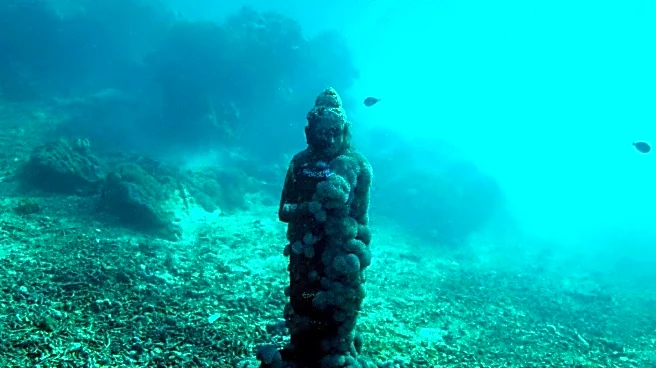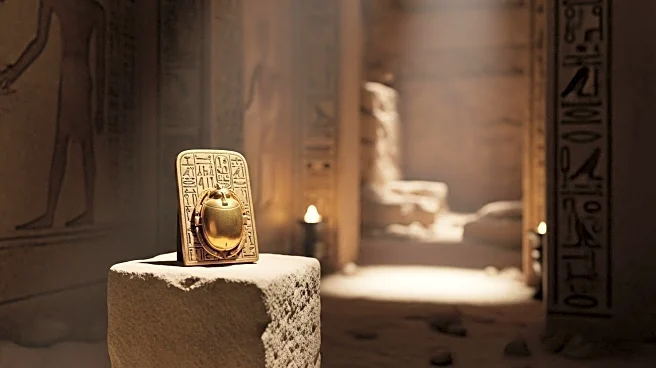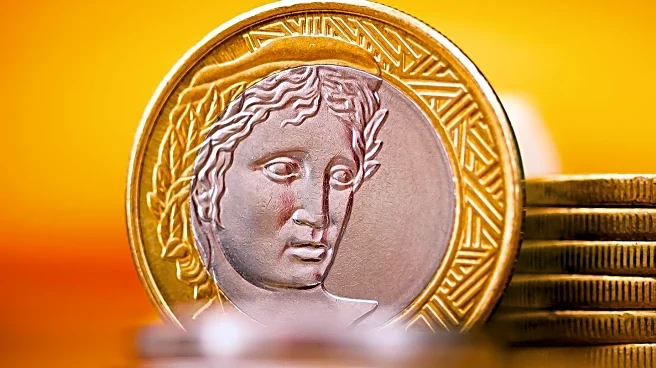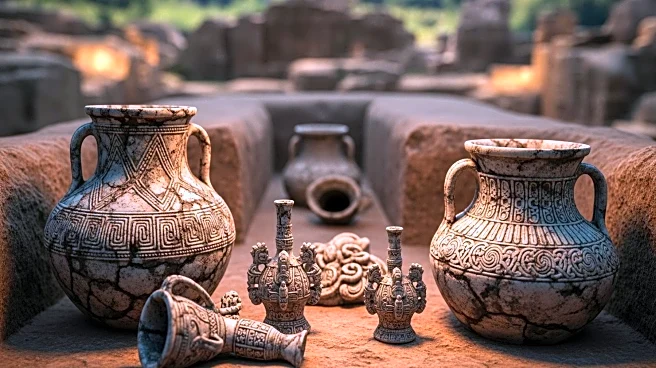What's Happening?
An international team of scholars has made significant progress in understanding the origins of the metal used in Bronze Age Sardinian figurines known as bronzetti. These small bronze figures, depicting warriors, deities, and animals, have long intrigued researchers due to their uncertain metal sources. The team employed a multi-proxy approach, combining several chemical analyses, to trace the copper used in these artifacts. The study revealed that the bronzetti were primarily made from copper sourced in Sardinia, occasionally mixed with copper from the Iberian Peninsula. The research also clarified that copper from the Levant was not used, a conclusion reached by analyzing osmium isotopes. This discovery was made possible by a new method developed at the Curt-Engelhorn Center for Archaeometry in Mannheim.
Why It's Important?
This research is crucial as it provides insights into the metal trade during the Bronze Age, highlighting Sardinia's role as a central hub. Understanding the origins of the bronzetti's metal helps map historical connections between Sardinia and other regions, such as the Iberian Peninsula and potentially Scandinavia. The findings also underscore the importance of combining archaeological methods with advanced scientific techniques to refine historical narratives. This study not only resolves longstanding questions about the bronzetti but also opens new avenues for exploring cultural and trade interactions in the ancient world.
What's Next?
The research team plans to continue exploring the connections between Sardinia and other regions during the Bronze Age. Further studies may focus on the strategic mixing of metals to achieve specific effects, such as color and strength, in the bronzetti. Additionally, the collaboration between natural science and archaeology is expected to deepen, potentially leading to more precise determinations of geographic sources for other ancient artifacts. These efforts could further illuminate the complex trade networks and cultural exchanges of the period.
Beyond the Headlines
The study highlights the ethical and cultural dimensions of archaeological research, emphasizing the importance of preserving and understanding ancient artifacts. By uncovering the origins of the bronzetti, researchers contribute to a broader understanding of human history and cultural heritage. The findings also suggest a shared tradition in the manufacture of bronzetti across Sardinia, reflecting a cohesive cultural identity during the Bronze Age.










